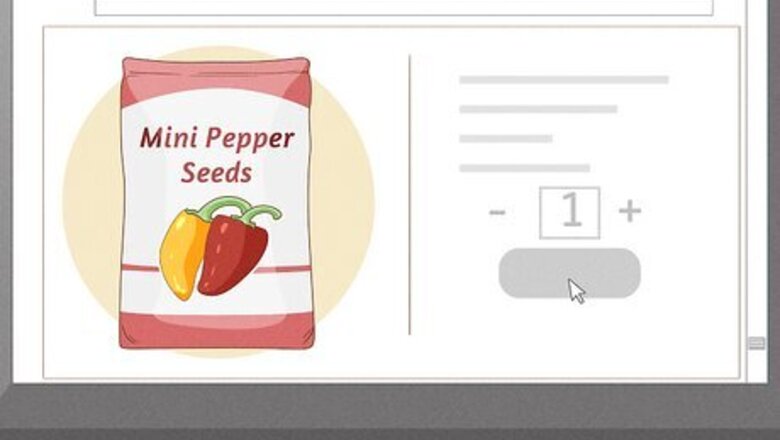
views
- Select your seeds by harvesting them from a store-bought pepper or buying them online. If you harvest from an existing pepper, ensure it’s healthy for best results.
- Plant your seeds indoors in a starter pot at least 12 weeks before the final frost of winter.
- Replant your seeds outdoors once they’ve grown 2 sets of leaves. This indicates they’re ready to reach their full potential in a larger pot outside.
Selecting Your Seeds
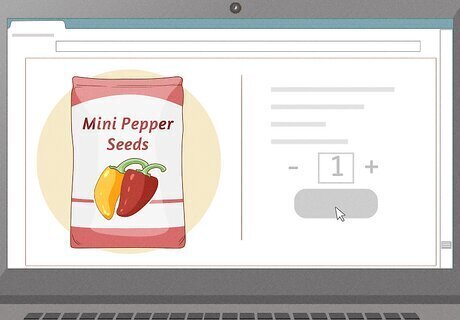
Choose a source for your seeds. You can buy seeds, or you can opt to harvest seeds from an existing pepper. You want your mini pepper plants to be as strong and productive as possible. Thus, if you choose to get seeds from a pepper, you should take seeds from the kind of pepper you’d like to reproduce. Choose one that is fresh, healthy, and from a hardy plant. You can also buy mini pepper seeds online or at your local gardening store. Some store-bought mini peppers will be able to reproduce. However, some commercial produce is actually sterile and the seeds will not grow into fruit-bearing plants.
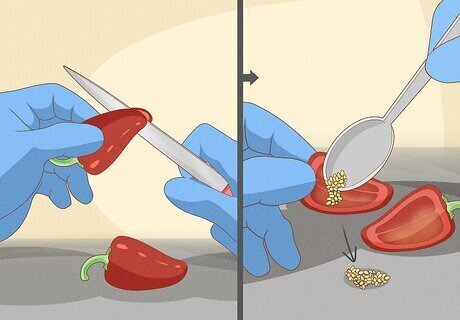
Remove the seeds. Cut the pepper open with a sharp knife. Be careful as you cut, so as not to cut many of the seeds in half. Use a spoon or your fingers to take the seeds out of the pepper. Spread them out on a piece of paper towel. Once the seeds have been removed from the pepper, inspect them and remove any that are discolored or damaged. If the mini peppers you’re growing are hot, be careful. The seeds contain capsaicin, which is the chemical that gives peppers their heat. It can burn your skin, depending on how hot the pepper is. And it will definitely burn your eyes if you touch them after handling hot pepper seeds. Wear latex gloves if necessary.

Dry the seeds. This step is crucial to making sure your mini pepper seeds will grow. Moisture feeds fungus, which will render your seeds useless. Let the seeds dry out by putting them in either the sun or a dehydrator. You can dry the seeds on a piece of paper towel. It will soak up any moisture. Don't leave the seeds outside where they may get eaten by birds or other animals. When you think the seeds are dry, test them. Dry seeds should not be able to bend. They should snap in half went bent or when you bite down on them. If they bend or leave a dent, they still have moisture inside them.
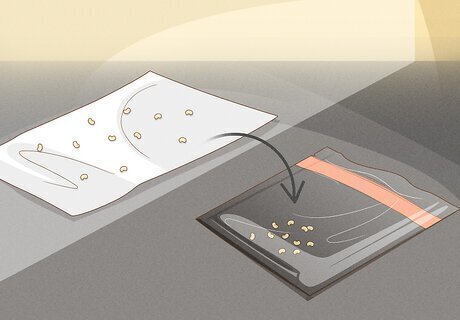
Store the seeds. If you plan to plant immediately, you won’t need to store your seeds. However, if you won’t be planting for a while, or you have more seeds than you need this year, you’ll want to store them for future use. Place seeds in air-tight containers such as ziploc bags or tupperware. Store them in a dark, dry place away from natural light. Don’t forget to label your seeds!
Starting the Seeds Indoors
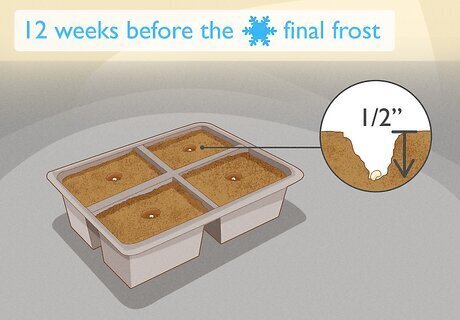
Plant seeds indoors and early. Pepper plants can take a long time to germinate. Get ahead of the game by starting them indoors while it’s still cold outside. You can place your seeds in starter pots as early as 12 weeks before the final frost date. Seeds can be started in any small container with good drainage. Gardening supply stores sell starter pots in multi-packs. However, you can also use paper or plastic cups and poke holes through the bottom for draining extra water. Fill each cup or starter pot with potting soil or topsoil. Then, place the seeds in the soil, about ½” below the surface. You can plant anywhere between one and three seeds per container, depending on the size of the pot. Plant more seeds than the number of plants you hope to produce. You’ll select and thin your seedlings once they start to grow. Mini peppers are surprisingly hardy and don’t need special fertilizers or nutrient mixes to get started in most conditions.
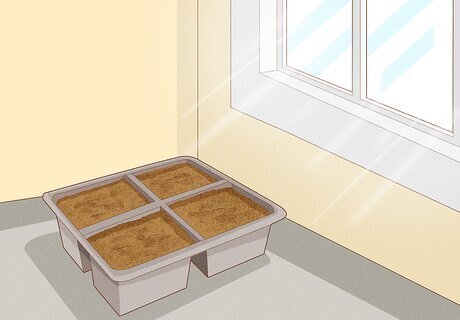
Place the seeds in a warm, sunny place. Window sills are the ideal indoor spot for your seedlings. They offer plenty of natural light and can be warm areas in a house. Mini peppers do best in warm climates, so try to offer them as much sun and heat as you can while they germinate. Be patient. Mini peppers can take weeks to germinate. Keep your eye on them and make sure they’re getting as much sun as possible. Keep the seedlings safe from pets such as cats and dogs that might knock them over or dig at them. If you don’t have a sunny window on hand, try putting the seeds under a florescent light.
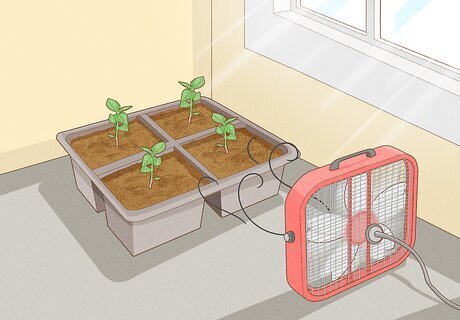
Turn a fan on the seedlings. Once your seeds have sprouted, a key to successfully growing many types of pepper is keeping them almost a little too dry. By putting a fan near your seedlings, you can help blow away excess moisture that leads to root rot and fungal infections. You can also put the seedlings near a vent, where the air is generally circulating.
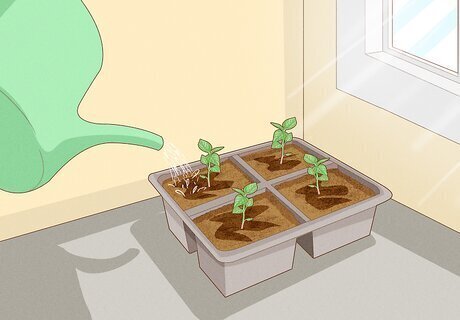
Water the seedlings sparingly. It can be tempting to water your seedlings everyday, since you want to keep them growing. However, mini peppers actually do better when their soil is dry. Peppers grow well in arid climates, so there’s no need to overwater them. Over watering is an easy way to damage or even kill your mini pepper plants. A good gauge of when to water is to wait until your seedlings begin to wilt slightly. That’s when it’s time to water. A spray bottle can be a good way to keep soil moist without overwatering.

Snip the weaker seedlings. When the time to transplant comes, look at your seedlings and choose which ones you want to continue tending to. You likely have more seedlings than you have room for. Cut the smaller, less healthy looking seedlings to allow the healthier ones more space and access to nutrients. If you don’t want to kill the extra seedlings, you can transplant them into other starter pots and give them away to friends. It may be tempting to keep all of your mini pepper plants and space them very densely; however, this can lead to overcrowding, and your plants may not be healthy as they compete for light and water.
Replanting Seedlings
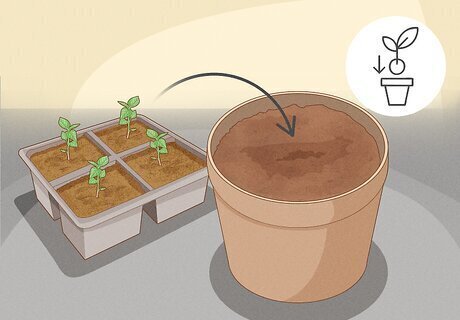
Transplant mini peppers when they have two sets of leaves. Keep an eye on your pepper plants as they continue growing indoors. When they have two sets of full, true leaves, they’re ready to be transplanted. You can transplant your mini peppers outdoors, or into larger indoor pots. Mini peppers can make great hanging plants either indoors or outdoors. If your mini pepper plants have gotten very big indoors but it’s still not warm enough to move them outside, you may need to move them into a larger pot while you wait for the weather outside to warm up. Place seedlings 14 inches apart to allow them plenty of space to grow, and access to nutrients.
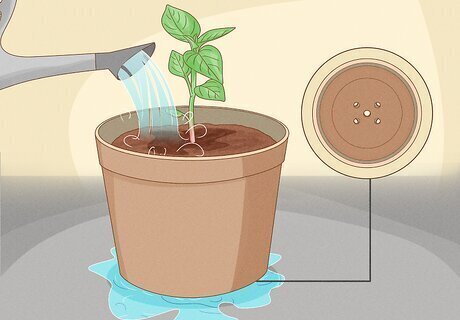
Make sure there’s proper drainage. Wherever you move your mini pepper plants to, be sure that the excess water can drain away from them. If you plant them in a pot, make sure it is porous and has holes at the bottom. If you plant them outside, make sure the water has somewhere to go so it doesn’t simply sit in the bed and stagnate.

Ensure plenty of sun and water. Plant peppers in a spot where they can get lots of sun. Avoid putting them anywhere with lots of shade from other plants or buildings. If you’re keeping them inside, you may want to consider a growth lamp if you don’t have a particularly sunny spot for them. Don't over-water mini pepper plants. Let the soil become dry before you water them. Remember that they are used to very hot, arid climates. Planting mini peppers up against a brick or cement wall can be great because the wall will absorb and radiate heat from the sun, giving the peppers an extra boost of warmth.
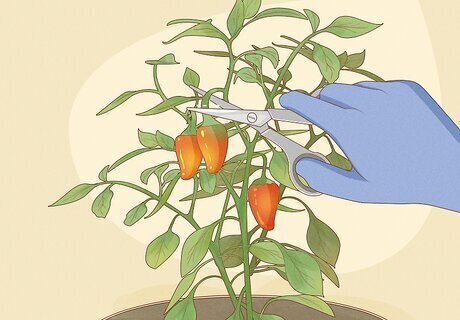
Pick peppers when they are large enough. Mini peppers of course won’t grow very large. When they seem to be the proper size (and color) pick them by cutting with a sharp knife or shears. Some mini peppers are ornamental, so you probably won’t want to pick them. Extremely hot peppers should be picked with caution or with gloves, so you don’t get burned.

Extend your season by trimming your plants. About six weeks before you expect your first frost, cut back the tp branches and flowers of your plants. This causes the peppers that are already growing to mature more quickly, so they can ripen before the frost.


















Comments
0 comment